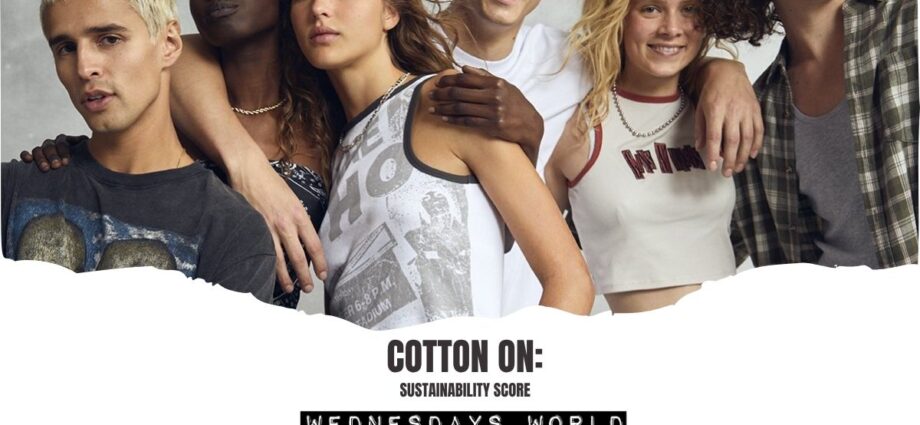Cotton On Score 3/5 from Wednesday’s World. The are called Cotton On, but how much is actually Cotton?
Price Range: Affordable
The Sustainability Spotlight
Not all Cotton, however they’re committed to transitioning more of their fibres to reduced-impact alternatives such as recycled and organic materials. By 2028, they aim for 100% of their plastics, polyester, and synthetic materials to be made from certified recycled alternatives. It’s a commendable goal, but the journey is far from complete.

Production practices at Cotton On reveal a brand grappling with the complexities of sustainable manufacturing. While they’ve set a target for 100% of their denim to be washed using water-reduction processes by 2026, there’s still a lack of evidence regarding meaningful action to reduce overall water use or eliminate hazardous chemicals in manufacturing.

In packaging, Cotton On shines brighter. They’re striving for all packaging to be reusable, home compostable, renewable, or easily recyclable by 2025. It’s a wrapper of hope around their products, signalling a commitment to reducing waste beyond just their garments.
Their initiatives, while promising, still leave room for growth. Cotton On has set ambitious carbon neutrality goals, aiming to be carbon neutral in Scope 1 & 2 by 2030, and in Scope 3 by 2050.
Transparency: A Clear View?
Cotton On’s approach to transparency is like a partially open window, we can see some of what’s inside, but much remains obscured. They’ve received a score of 21-30% in the 2023 Fashion Transparency Index, indicating that there’s still a significant journey ahead in terms of openness about their practices and supply chain.
Is Cotton On a Good Choice
Cotton On stands at a crossroads in the sustainable fashion landscape. Their ambitions are laudable, their goals ambitious. Yet, the gap between aspiration and action remains a chasm to be bridged. For the conscious consumer, Cotton On represents a brand in transition, one that recognizes the need for change but is still navigating the complex path towards true sustainability.
As we consider our relationship with fashion and its impact on our planet, brands like Cotton On challenge us to question the true cost of affordability. Can fast fashion ever truly be sustainable? Or does the very nature of rapid production and consumption inherently conflict with environmental stewardship?
In the end, Cotton On’s story is still being written. As conscious consumers, we have the power to influence that narrative. Will we choose to support brands as they strive for better practices, or will we demand more immediate and comprehensive change? The choice, like a loose thread on a favourite garment, is in our hands to reimagine entirely.

